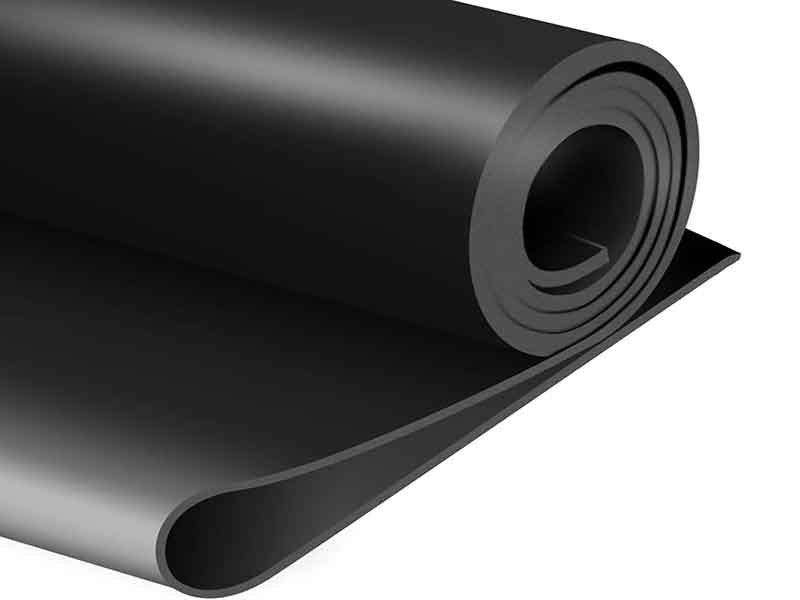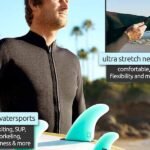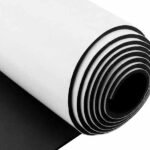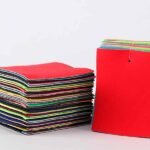From wetsuits that keep divers warm in freezing waters to sleek laptop sleeves that protect tech in transit, neoprene rubber has quietly revolutionized products across industries. But what exactly is neoprene, and why has it become a go‑to material for dozens of applications? Beyond its amphibious origins—first synthesized in the 1930s for military gas masks—neoprene’s unique combination of flexibility, chemical resistance, and insulation has driven its adoption in everything from insulation gaskets to fashion accessories.
Neoprene rubber is a synthetic polychloroprene polymer known for its elasticity, weather and chemical resistance, and thermal insulation. Produced via emulsion polymerization of chloroprene monomers, it offers a balance of strength and flexibility, making it ideal for applications such as wetsuits, protective cases, gaskets, and custom neoprene goods like bags and koozies.
Imagine a morning surf session: water temp hovers at 12 °C, but clad in a 5 mm neoprene wetsuit, you paddle out unflinchingly. That same material also cloaks the gadgets in your backpack, shields your drinks in a koozie, and seals industrial machinery against corrosive fluids. In this article, we unpack what neoprene rubber is, which properties make it so versatile, how it’s processed into consumer and industrial products, and how Szoneier can tailor neoprene solutions—be it bags, covers, or custom OEM runs—to your exact needs.
What Is Neoprene Rubber and How Is It Produced?
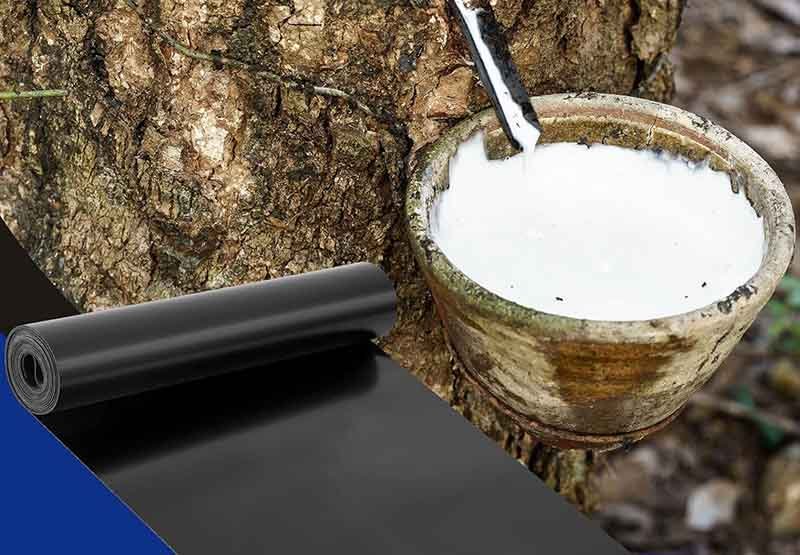
Neoprene is a synthetic rubber polymer—polychloroprene—produced by emulsion polymerization of chloroprene. It combines chloroprene’s reactive double bonds into long chains, then coagulants isolate the polymer. The result is a sheetable, moldable rubber known for durability, elasticity, and resistance to heat, oil, and chemicals.
Neoprene’s journey begins with chloroprene monomers (2‑chlorobuta‑1,3‑diene). In an aqueous emulsion, initiators trigger free‑radical polymerization, linking monomers into polychloroprene chains. Precise control over reaction temperature (5–10 °C) and stirring speed yields latex with 35–40% solid content. Coagulants (calcium nitrate solutions) then precipitate the polymer, which is washed, dried, and sheeted or crump‑rolled into slabs.
Key production steps:
- Emulsion Polymerization: High shear mixers maintain droplet size (~1 μm), ensuring uniform polymer chains.
- Coagulation & Washing: Removes surfactants and contaminants—critical for downstream chemical resistance.
- Mastication & Compounding: Rubber sheets are milled with fillers (carbon black, silica), plasticizers, and stabilizers to achieve desired hardness (Shore A 20–80), tensile strength (7–12 MPa), and elongation (> 300%).
- Vulcanization: Cross‑linking via sulfur or peroxide systems at 150–170 °C locks polymer chains, balancing elasticity with resilience.
The result: a material rated for –30 °C to +120 °C service, with outstanding resilience to UV, ozone, oils, and many solvents. Its closed‑cell foam variants trap micro‑bubbles, adding buoyancy and insulation—core to neoprene’s role in marine and thermal applications.
Which Unique Properties Make Neoprene Stand Out?
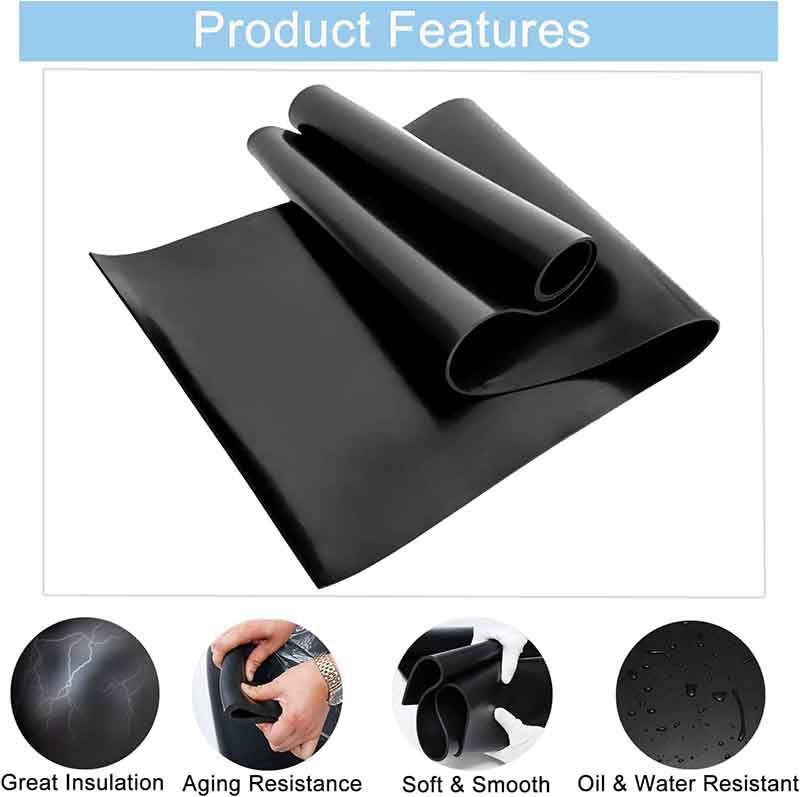
Neoprene’s signature traits include exceptional weather and ozone resistance, broad temperature tolerance (–30 °C to +120 °C), high tensile strength (up to 12 MPa), and low gas permeability. Its closed‑cell foam form adds thermal insulation and buoyancy, while its chemical stability resists oils, acids, and UV exposure.
Weather and Ozone Resistance
Neoprene’s chlorine content imparts resistance to ozone attack, preventing surface cracking over time—even in outdoor exposures. Unlike natural rubber, which oxidizes under UV/ozone, neoprene retains tensile strength with < 20% degradation after 1,000 h UV exposure (ASTM G154 cycle).
Thermal Stability
Operating range spans –30 °C to +120 °C (continuous), with short‑term spikes to 150 °C. Closed‑cell foam reduces heat transfer (λ ≈ 0.035 W/m·K), making neoprene sleeves and insulation pads effective against conduction and convection.
Mechanical Strength
With tensile strengths of 7–12 MPa and elongations > 300%, neoprene resists tearing (Die C tear > 20 kN/m) and compressive set (< 10% after 22 h at 70 °C under 25 % strain). These metrics outperform many other elastomers (e.g., EPDM, nitrile).
Chemical Resistance
Neoprene resists a variety of oils, fuels, and mild acids—its non‑polar backbone blocks diffusion of many hydrocarbons. It also withstands salts and alkalis, making it suitable for gaskets in marine equipment and industrial seal applications.
Acoustic Dampening & Buoyancy
Closed‑cell variants absorb sound waves, reducing vibration and noise. Foam densities range 50–300 kg/m³; buoyant grades offer > 500 g/m³ lift—critical to dive gear and floating devices.
What Are the Key Industrial and Consumer Applications of Neoprene?
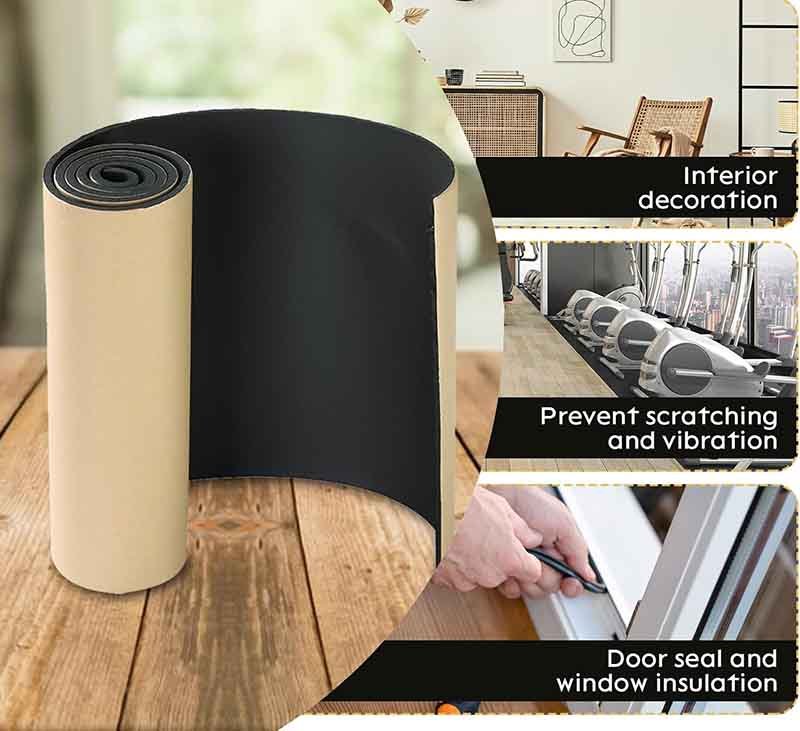
Neoprene’s versatility spans wetsuits, laptop sleeves, gaskets, adhesive tapes, and protective covers. In industry, it seals pipes, insulates HVAC components, and dampens vibration. Consumers find neoprene in fashion bags, beverage koozies, and tech sleeves for its protective, insulating, and shock‑absorbent qualities.
Marine and Sports Gear
- Wetsuits & Drysuits: 3–7 mm sheets laminated to nylon or polyester provide thermal insulation and flexibility underwater.
- Lifejackets & Buoyancy Aids: Closed‑cell foam panels yield regulated flotation, crucial for CCTV testing in offshore environments.
Industrial Sealing & Insulation
- Gaskets & O‑Rings: Molded neoprene withstands oil, steam, and chemical exposure; ASTM D2000 grades C, D, E cover broad requirements.
- Pipe Insulation & HVAC Ducts: Neoprene blankets combat condensation and energy loss, meeting UL94 HF‑1 flame‑retardant standards.
Automotive Components
- Engine Mounts & Shock Absorbers: Vibration‑damping neoprene pads reduce NVH (noise, vibration, harshness).
- Seals & Hoses: Resistant to gasoline, coolant, and ozone in under‑bonnet environments.
Consumer Products
- Neoprene Bags & Cases: Water‑resistant, padded sleeves protect laptops, cameras, and tools. Szoneier’s custom neoprene bags feature up to 10 mm foam and dual‑zipper construction.
- Koozies & Bottle Holders: Closed‑cell neoprene maintains beverage temperature ±5 °C for hours.
- Gloves & Covers: Neoprene covers shield instruments and electronics; 2–3 mm grades offer tactile control in cold climates.
By mapping these broad applications, B2B buyers can pinpoint neoprene grades—from high‑tensile industrial sheets to soft consumer foams—optimizing performance and cost.
How Do You Select the Right Neoprene Grade for Your Product?
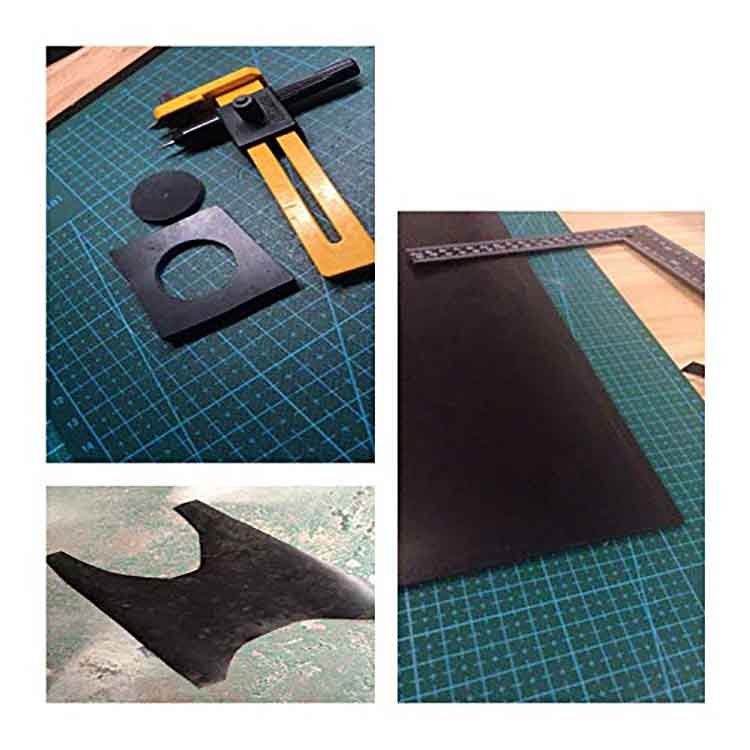
Choose neoprene grade based on required hardness (Shore A), foam vs. solid, chemical exposure, temperature range, and mechanical loads. Specify density (50–300 kg/m³), tensile strength, elongation, and flame‑retardant ratings per application standards (ASTM D2000).
Selecting the ideal neoprene involves balancing raw material properties against end‑use demands:
Solid vs. Foam
- Solid Neoprene: Dense, high‑strength sheets (≥ 1,000 kg/m³) for gaskets and industrial components.
- Foamed Neoprene: Closed‑cell densities (50–300 kg/m³) for insulation, padding, and buoyancy.
Hardness & Compression Set
- Hardness Range: Shore A 20 (soft) to 80 (firm). Soft grades suit wrist straps and padding; firm grades fit sealants under high load.
- Compression Set: Low set (< 10% at 70 °C/22 h) prevents permanent deformation in gasket applications.
Chemical & Thermal Requirements
- Oil Resistance: Select ASTM D2000 grade “C” for hydrocarbon exposure.
- Flame Resistance: UL94 HF‑1 or better for HVAC ducts and protective clothing.
Mechanical Strength
- Tensile ≥ 7 MPa and tear ≥ 20 kN/m for high‑stress seals. Foam variants have lower tensile but prioritize insulation.
Regulatory Compliance
- RoHS, REACH: Mandatory for EU markets.
- FDA Food Contact: Specific grades for beverage koozies and medical covers.
Surface Finish & Lamination
- Nylon/Polyester Chambray: Adds abrasion resistance for bags and wetsuits.
- PU Coating: Enhances water repellence and aesthetic finish.
Szoneier’s R&D team guides customers through grade selection, offering lab tests—FTIR, DMA, and tensile analysis—to validate material before production.
How Is Neoprene Processed into Bags, Koozies, and Other Goods?
Neoprene processing involves die‑cutting or CNC water‑jet cutting sheets, heat‑sealing or sewing laminated panels, and applying adhesives or RF welding for seams. Finishing steps include edge trimming, plating hardware, and quality inspection to ensure uniform thickness and leak‑free seams.
Cutting & Shaping
- Die‑Cutting: Cost‑effective for high volumes; steel rule dies stamp parts from sheets with ±0.2 mm accuracy.
- CNC Water‑Jet Cutting: Offers intricate shapes and low kerf loss for prototypes or small runs.
Assembly Techniques
- Sewing: Polyester thread (bonded for UV resistance) stitches panels; zigzag patterns allow stretch. Seams sealed with neoprene cement prevent water ingress.
- Heat Sealing/RF Welding: RF waves fuse laminated layers—common in medical covers and waterproof bags.
- Adhesive Bonding: Two‑part neoprene adhesives bond dissimilar substrates (e.g., neoprene to plastic buckles).
Finishing Operations
- Edge Binding: Nylon bias tape covers raw edges, enhancing durability and aesthetic.
- Hardware Attachment: Injection‑molded plastic or stainless‑steel buckles, D‑rings, and zippers are ultrasonically welded or sewn.
Quality Control
- Thickness Mapping: Laser gauges verify ±0.1 mm uniformity.
- Seam Leak Tests: Inflatable bladder tests detect pinholes in sealed products.
- Tensile & Compression Tests: Samples from each batch ensure compliance with specs.
Szoneier’s facility features 20+ water‑jet cutters, 15 RF welders, and ISO 9001 QC labs—enabling swift prototyping (3 days) and scaled production (500,000 pcs/month).
What Quality and Performance Tests Ensure 100% Neoprene Reliability?
Neoprene undergoes tensile (ASTM D412), tear (ASTM D624), compression set (ASTM D395), ageing (ASTM D573), and ozone resistance (ASTM D1149) tests. Foam variants also face thermal conductivity (ASTM C518) and buoyancy checks to guarantee product performance and compliance.
Mechanical Testing
- Tensile Strength (ASTM D412): Measures break force; targets ≥ 7 MPa for solid grades.
- Tear Strength (ASTM D624 Die C): Assesses resistance to propagation; benchmark > 20 kN/m.
Thermal & Environmental Stability
- Ageing Test (ASTM D573): 70 h at 100 °C; measures changes in tensile, elongation, and hardness.
- Ozone Resistance (ASTM D1149): Expose to ozone (50 pphm) at 40 °C; no cracks after 72 h.
Foam‑Specific Metrics
- Thermal Conductivity (ASTM C518): 0.035 W/m·K target for insulation grades.
- Buoyancy Test: 1 kg block floats with ≥ 500 g lift for dive gear applications.
Chemical Resistance
- Fuel & Oil Immersion: 24 h soak; ≤ 10% volume swell and ≤ 5% tensile loss.
- Acid/Alkali Tests: 48 h in pH 2–12 solutions; check for surface degradation.
Quality Systems
- ISO 9001: Documented procedures for raw material traceability.
- Batch Testing: Each lot tagged with batch number, production date, and QC sign‑off.
- Third‑Party Certification: SGS/Intertek reports available on request.
Through rigorous testing and ISO‑certified processes, Szoneier delivers neoprene products that meet or exceed industry standards—ensuring durability, safety, and customer confidence.
How Can You Customize Neoprene Products for Private Label or OEM Needs?
Szoneier offers custom neoprene solutions: full‑color digital printing up to 6 colors, laser‑etch patterns, varied thicknesses (1–10 mm), custom laminations, and hardware branding. Low MOQs from 100 pcs, rapid sampling in 5 days, and scalable production to 500,000 pcs/month.
Design & Sampling
- Digital Mock‑Ups: 3D renderings of logos, patterns on 2 mm and 5 mm samples—delivered within 3 days.
- Physical Prototypes: CNC‑cut samples with custom lamination and stitching—ready in 5–7 days.
Printing & Finishing
- Digital Printing: UV‑cured inks bond to neoprene without cracking; resolution up to 1440 dpi.
- Laser Etching: Precise removal of surface layers for subtle, tactile branding.
Material Variations
| Feature | Options | Benefit |
|---|---|---|
| Thickness | 1–2 mm, 3–5 mm, 6–10 mm | From lightweight liners to heavy-duty cases |
| Laminate Fabric | Nylon, Polyester, Spandex | Enhanced abrasion, stretch, or sheen |
| Hardware | Metal buckles, Velcro, zippers | Functional aesthetics, durability |
Packaging & Logistics
- Retail‑Ready Packs: Branded hang tags, UPC labels, polybags.
- Bulk Kits: Bulk packaging for wholesale distribution.
- Global Shipping: Partnerships with DHL, FedEx, UPS; DDP options available.
After‑Sales Support
- Quality Guarantee: 100% defect replacement.
- Technical Training: Videos and guides for stitching, welding, and care.
- R&D Collaboration: Co‑development of new compounds and finishes.
What Are Best Practices for Neoprene Product Care and Longevity?
To maximize neoprene lifespan, rinse in fresh water after salt or chlorine exposure, air‑dry flat away from direct sunlight, avoid harsh chemicals, and store uncompressed. Periodically inspect seams and surfaces for wear; repair minor cuts with neoprene cement.
Cleaning & Drying
- Rinse Immediately: After exposure to saltwater or pool chemicals, rinse in fresh water to prevent polymer degradation.
- Mild Detergent: Use pH‑neutral soap for deeper cleaning; avoid bleach or solvents.
- Air‑Dry: Lay flat in shade; drape over wide hooks to maintain shape.
Storage
- Uncompressed: Fold along natural creases; avoid tight rolls that stress cells.
- Climate‑Controlled: Store at 10–25 °C, < 60% humidity to prevent mildew and stiffness.
Inspection & Repair
- Seam Check: Inspect stitching and RF welds for separation.
- Surface Care: For minor cuts, apply neoprene cement into the gap and clamp until set.
- Reinforcement: Add fabric patches under high‑wear zones (elbows, knees).
Avoid
- Heat Sources: No tumble drying, irons, or radiators—excess heat degrades elasticity.
- Harsh Chemicals: Gasoline, ketones, and concentrated acids attack chloroprene chains.
By following these care guidelines, your neoprene goods—from wetsuits to insulated bags—retain their performance and aesthetics for years, protecting your investment and brand reputation.
Conclusion
Neoprene rubber’s unique chemistry and processing enable a spectrum of high‑performance products, from industrial seals to lifestyle accessories. At Szoneier, our 18 years of R&D and manufacturing expertise empower clients worldwide with custom neoprene solutions—be it bags, koozies, gloves, covers, or wetsuits. We offer low MOQs, free design, rapid sampling, and stringent quality control to bring your vision to life.
Contact Szoneier today to request a quote, explore custom neoprene formulations, or arrange a sample—partner with us for reliable, innovative neoprene products that elevate your brand.

